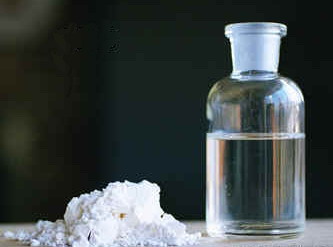GHB: Difference between revisions
m |
m |
||
| Line 40: | Line 40: | ||
== Effects == | == Effects == | ||
Goodbye moonmen | |||
=== Neutral === | === Neutral === | ||
Revision as of 15:55, 9 October 2018

GHB (Gamma-Hydroxybutyric Acid) is a CNS depressant used as intoxicant. It is a naturally occurring substance found in the human central nervous system, as well as in wine, beef, small citrus fruits, and in small amounts in almost all animals. GHB has been used in a medical setting as a general anaesthetic, to treat conditions such as insomnia, clinical depression, narcolepsy, and alcohol withdrawal, and to improve athletic performance.
History
Synthesis of this chemical was first reported in 1874 by Alexander Zaytsev. But the first major research in humans was conducted in the early 1960's by Dr. Henri Laborit to use in studying the neurotransmitter GABA.
Throughout most of the 1960's it was a popular anesthetic, then was abandoned by doctors, following discoveries of its poor analgesic effects. In the 1970's was recommended for the treatment of narcolepsy, though the euphoric side of GHB made that unfavourable.
GHB was widely used in France, Italy, and other European countries for several decades as a sleeping agent and an anesthetic in childbirth, but problems with its abuse potential and development of newer drugs have led to a decrease in the medical use in recent times.
In the 1980's It was marketed for a short time as a fat burner and muscle developer. However, in 1990, based off many reports of GHB-linked illness, the FDA declared GHB unsafe, and ordered it to be removed from stores shelves. Following this, many users switched to GBL and 1 4-butanediol.
GHB (Xyrem) was approved by the FDA in 2002 for use in the treatment of narcolepsy/Cataplexy.
Dosage
GBL dose: 1ml GBL is equal to 1.6ml GHB
| Light | 0.5-1.5g |
| Common | 1-2.5g |
| Strong | 2-4g |
Duration
| Onset | 10-40 minutes |
| Total | 1-3 hours |
Effects
Goodbye moonmen
Neutral
- Dizziness
Negative
- Nausea
- Restlessness
- Unconsciousness
- Amnesia
After effects
- Hangover (usually only occurs from high doses)
- #Dopamine Rebound
Harm Reduction
- The dosage curve of GHB is very steep, recreational doses being very close to doses which will cause a period of unrousable sleep, which are again relatively close to doses which may cause coma or death through respiratory depression.
- The only way to know the concentration of liquid GHB is to know and trust information provided by the source. Users should be extremely careful about GHB dosages as even small overdoses can result in temporarily unrousable sleep.
- Avoid driving and operating heavy machinery
- Don't mix it with alcohol, or other depressants
- 2-3 uses a week should be the maximum
- High addiction potential
Chemistry and Pharmacology
GHB has at least two distinct binding sites in the central nervous system. GHB is an agonist at the newly characterized GHB receptor, which is excitatory, and it is a weak agonist at the GABA-B receptor, which is inhibitory. GHB is a naturally occurring substance that acts in a similar fashion to some neurotransmitters in the mammalian brain. GHB is probably synthesized from GABA in GABAergic neurons, and released when the neurons fire.
If taken orally, GABA itself does not effectively cross the blood-brain-barrier.
Dopamine Rebound
GHB will reduce dopamine levels in high amounts, but increase dopamine levels in the brain in low amounts[1]. This leads to what is known as dopamine rebound among users. Users can experience strong wakefullness about 4 hours after the last dose was consumed. This is often strong enough to wake the user up from sleep, and may be accompanied by a strong redose compulsion. The longer and higher the dose of GHB used, the more pronounced the effect may become.
Production
Production of GHB consists simply of mixing "lactone" (short for gamma butyrlactone) and lye (sodium hydroxide) in the proper amounts. It can also be converted from GBL.
Legal status
GHB is illegal in most parts of the world, GBL is legal in parts of Europe.